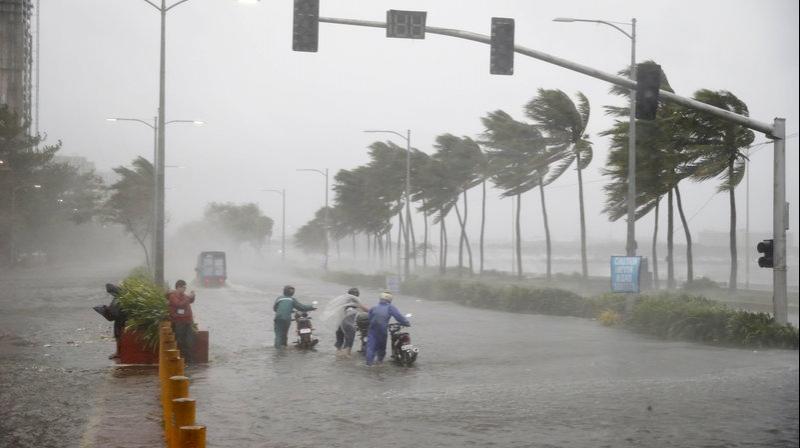With the typhoon season underway in the country, everyone is again up on their toes. Filipinos have become well aware of the sheer destructive power of these storms ever since Ondoy and Yolanda. To keep yourself and your home safe, here are some important typhoon safety tips.

Protecting your home from the typhoon
Making sure your home is safe from typhoons is the first thing you should focus on when you hear the first signal raised in your area. Some of the things to consider when assessing your home’s typhoon resistance are:
- Durability of materials: Concrete houses will be able to withstand the winds better than those made of wood or other light materials.
- Roof shape: A four sloped roofs allows for a more streamlined passage of the wind, preventing it from uprooting your roof.
- Elevated locations: If your home is located on the lower part of your area, it will be more prone to floods coming from the upper regions.
By taking these factors into account, you can determine what kind of precautions to take. Inspecting your home regularly is also important to give you a good idea of how it might have deteriorated in the last few months.
Beefing your home’s safety before the typhoon
When improving your home’s typhoon safety, the roof is one important area you should work on. Ensure that all your roofing sheets are secured to their supports. You can also put on heavy weights like used car tires to further prevent them from being lifted by strong winds.
Another part of the roof to check are the gutters. Make sure they are not clogged by leaves or other debris. A clogged gutter leads to rainwater seeping into your ceiling or walls. You would also want to inspect it for cracks or breaks and repair them immediately.
Be on the lookout for external dangers that can cause damage to your home. Large falling branches are one such danger, so you might need to trim the trees around your home as a precaution. In the case of other obstacles like overhanging wires and billboards/signs, it would be a good idea to call agencies like Meralco or your city engineer office to deal with them.
If your home is prone to flooding, it is best to elevate all your electric and electronic appliances to protect them from damage. You can also temporarily move these up to your home’s second floor if you have one. Cover any exposed electrical outlets with waterproof tape to prevent them from getting wet.
Typhoon safety for your family
It is also essential that you and your family have an emergency kit at home for use during typhoons. These kit should include:
- A portable radio: Make sure to have at least two or three spare batteries to ensure it will be running when needed.
- Flashlights: Get at least two flashlights to give out to your companions. You should also have extra batteries handy.
- Medicines: Aside from basic ones like paracetamol or aspirin, take note of any special medications some of your family members might need.
- First aid kit: You can either buy a pre-prepared kit from any drugstore of assemble one of your own.
- Cash: Set aside a ready amount of cash you can use in case the ATMs are cut off or you have no access to online banking.
- Identification documents: Put your IDs and other essential documents in ziplock bags to protect them from damage.
Put your emergency kit in an easy-to-carry bag that you can quickly grab in case you need to leave. Aside from the kit, you should have an ample amount of food and water ready. Avoid stocking perishables and instead opt for dried or canned food you can prepare quickly.
Creating an evacuation plan
Depending on your location, you might not always need to evacuate but it would still be a good idea to have a contingency plan. Learn where the evacuation centers are located for your area and map out your route to each of them. Watch out for announcement coming from barangay officials to better plan your route.
Discuss with your family what your plan of action would be if you need to evacuate. Designate meetup places they can head to in case you are coming from different places. It would also be a good idea if everyone has a copy of the emergency numbers they should call.
Getting insurance
With all the dangers associated with typhoons, you would want to get some kind of insurance for both your family and house. If you can’t afford higher premiums, opt for microinsurances. They will cost you just around a hundred pesos a month and will give your family protection.
For property insurances, make sure you ask for an “all risks: option. This will cover all risks that might be associated with typhoons including flooding and fire. If you have a business tied to your home, you would also want to have that covered.
Practice typhoon safety and keep yourself away from harm
Incoming typhoons are always a scary experience for many. But if you are fully prepared for them, you can lessen the damage they cause to your family and home. Follow these simple steps to ensure the safety of your loved ones during the storm.

